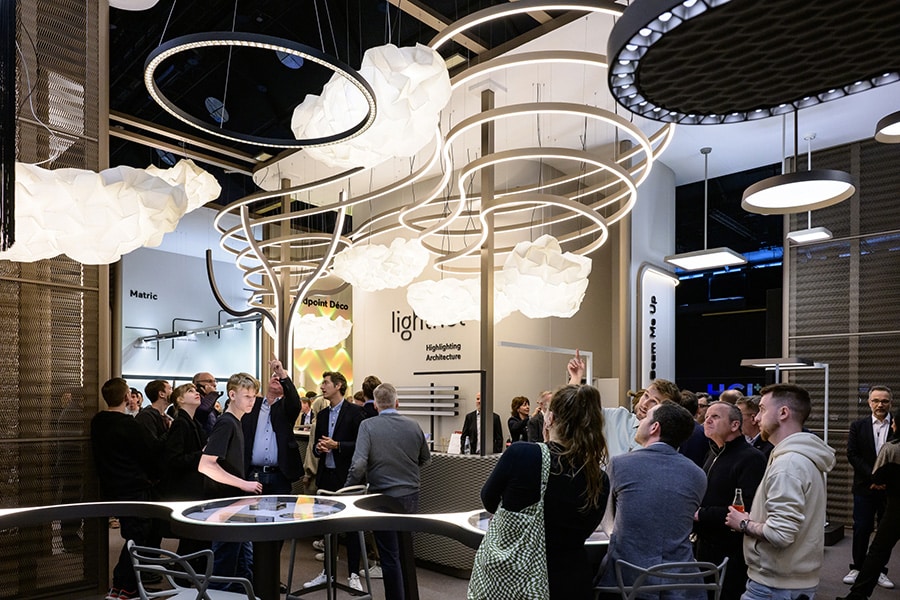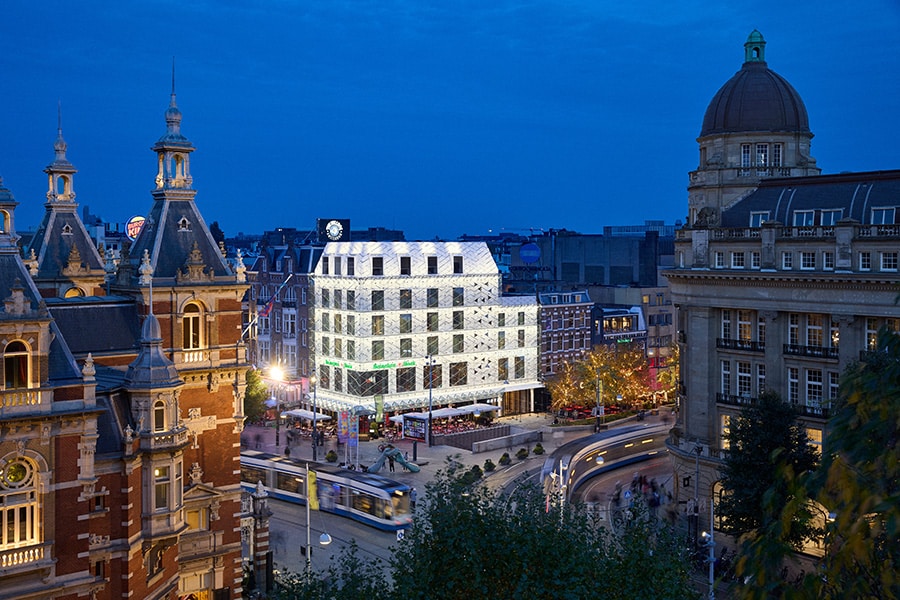
Are buildings in Europe ready for more heat waves?
In recent years, rapid global warming has led to more heat waves and extreme temperatures - "In Europe alone, the chances of a heat wave have now increased at least five times," wrote environmental editor Damian Carrington last summer in The Guardian[1]. Temperatures during heat waves are about 4 °C higher than half a century ago, scientists claim[2]. Last March, moreover, the mercury rose an average of nearly 2 °C higher than the average recorded from 1981 to 2010, knows at the EU Copernicus Climate Change Service. The question is: Are Europe's buildings ready to protect their occupants from this extreme heat? And if so, will it be done in a cost-, and more importantly, energy-efficient way?

External venetian blinds ©ROMA KG/Eckhart Matthaeus
Summers are getting warmer, starting earlier and potentially lasting longer. It is common knowledge that the associated high temperatures not only affect the elderly and those with pre-existing ailments[3] heavily, but also younger generations. In response to the heat, these are seeking greater comfort and healthier indoor lifestyles. Architects, engineers and construction companies are pursuing energy-efficient solutions to determine indoor climates, and governments are also increasingly aware of the negative impact of overheating in buildings. In the future, clear guidelines will play a vital role in efforts to cool buildings in a cost- and energy-efficient manner[4]. According to ES-SO, the European Solar Shading Organization, the answer to these challenges is obvious: "Solar shading will have to be at the forefront of every building in Europe to prevent overheating in the future. It is the most cost-effective solution on the market and has a direct impact on our health, comfort and energy consumption." [5]

Pivot arm awnings ©HAROL
Simple but effective
The term "shading" is used for external and internal systems that control the amount of heat and light from the sun entering through windows and glass facades, preventing overheating. Solar shading was already used in ancient Egyptian, Islamic and Persian cultures. Over the years, innovators developed numerous solutions (such as blinds, awnings, screens ...), contributing to the growth of a mature industry sector that today employs hundreds of thousands of people worldwide. In Europe alone, around 400,000 people are employed in the sun protection industry. This specialized manufacturing industry, which operates alongside the construction sector, includes many international market players who supply high-tech fabrics, motorized control systems and home automation solutions, among other things, to the manufacturers of finished products.

Conservatory awning by ©PARA' / WEINOR.COM
Calculating the impact of heat
To calculate the direct impact on heat and light transmission, the major players in the solar shading industry have worked with ES-SO to create a detailed database[6] and developed a calculation model: ES-SDA. This European database consists of validated and peer-reviewed performance data of solar shading systems according to CEN/ISO standards. Thanks to the tool, shading experts can give construction companies very targeted advice so that they choose the right automated shading system and know the precise impact on the indoor climate of future buildings. This tool can help prevent problem cases, such as this apartment in an old converted office building in north London. Without any shading, the temperature there sometimes rose to a scorching 47.5°C during a hot September month. With external shading (blinds or shades), this temperature could have been lowered to a more acceptable 28°C[7].

External roller blinds ©Verano
Prevention is better than cure
Automated shading systems prevent temperatures from rising too high indoors, eliminating the need for artificial cooling, lowering energy bills and providing greater comfort for users in all weather conditions. Unfortunately, global energy consumption to cool buildings has doubled since the year 2000. By the year 2050, this consumption could triple again[8] if efficiency is not jacked up. What would this mean for us as inviduals and as a society? Higher energy bills? Or - worse - that we fail to meet climate goals?

Awning ©Dickson
With heat waves and extreme temperatures coming our way in the future, solar shading becomes essential if we want to prevent buildings from overheating in an energy-efficient way. ES-SO aims to promote the added value of smart shading solutions in regulating the indoor climate, thus helping the EU meet its ambitious energy efficiency goals. According to a study9 of ES-SO in 2015 solar shading 22 % can help save energy and reduce CO2-emissions from buildings in Europe by 137 million tons each year.

Conservatory awning ©Renson
[1] Damian Carrington, environment editor at The Guardian, published on Tuesday, July 2, 2019 at 2:21 p.m.
[2] Man's contribution in the record heat wave of June 2019 in France Geert Jan van Oldenborgh, Sjoukje Philip ...
[3] Prediction '90,000 annual deaths as a result of heatwaves' ('90,000 deaths per year due to heatwaves'), European Commission Joint Research Centre PESETA IV, in the media
[4] Estimation of energy savings and wider benefits Art. 2 a(1)g Energy Performance of Buildings Directive: "use of solar shading systems that protect buildings from overheating during heat waves and have a direct impact on energy consumption by reducing the need to actively cool buildings," European Commission Recommendation EU2019/786 of May 8, 2019 on the renovation of buildings.
[5] www.es-so.com
[6] www.es-so-database.com
[7] https://www.shadeit.org.uk/wp-content/uploads/2018/03/Overheating-in-September.pdf
[8] IEA The future of cooling, 2018 https://www.iea.org/reports/the-future-of-cooling
[9]Study of ES-SO




